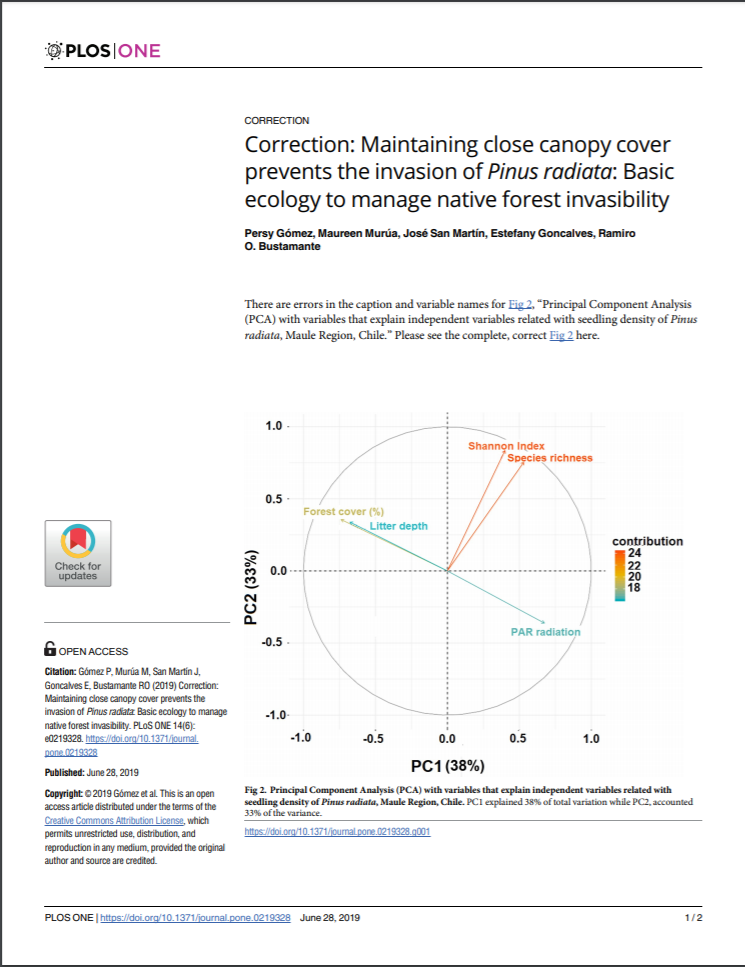Maintaining close canopy cover prevents the invasion of Pinus radiata: Basic ecology to manage native forest invasibility

Fecha
2019Autor
Murua, Maureen [Univ Mayor, Ctr GEMA Genom Ecol & Medio Ambiente, Santiago, Chile]
Gómez, Persy
San Martin, Jose
Goncalves, Estefany
Bustamante, Ramiro O.
Ubicación geográfica
Notas
HERRAMIENTAS
Acceda a títulos restringidos
¿Cómo descargar?Resumen
Pine invasion is a global threat that is occurring in native forests of diverse regions of the world. This process is arising in a scenario of rapid forest deforestation and degradation. Therefore, elucidate which forests attributes explain invasibility is a central issue in forest ecology. The Coastal Maulino forest is an endemic forest of central Chile, which has suffered a large history of disturbance, being replaced by large extensions of Pinus radiata plantations. This land transformation conveys high rates of pines invasion into native remnants. In this study we examined to what extent structural features of forest patches explains invasibility of this forest-type. Within eight forest fragments, we sampled 162 plots (10 x 10 m(2) each). We quantified seedling pine density and related these estimates with tree cover, litter depth, PAR radiation, and diversity of the resident community. Our results indicate that canopy cover was the most important variable to determine seedling pine density within forest fragments. Our investigation highlights the importance to conserve the forests cover to reduce significantly their invasibility. This action can be effective even if we cannot avoid pine plantations in the region as a source of a massive seed dispersal to forests with well conserved canopy.
URI
https://doi.org/10.1371/journal.pone.0210849http://repositorio.umayor.cl/xmlui/handle/sibum/6417
https://journals.plos.org/plosone/article?id=10.1371/journal.pone.0210849
Coleccion/es a la/s que pertenece:
Si usted es autor(a) de este documento y NO desea que su publicación tenga acceso público en este repositorio, por favor complete el formulario aquí.